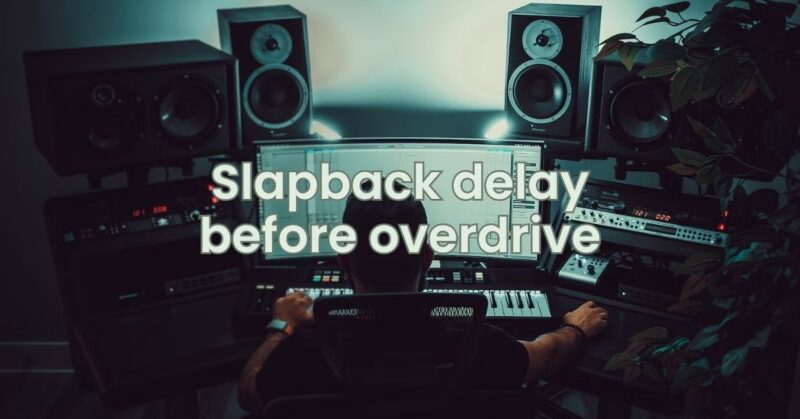In the pursuit of crafting unique and expressive guitar tones, the order of effects in your signal chain plays a pivotal role. One favored setup among guitarists seeking vintage-inspired sounds is using slapback delay before overdrive. This arrangement yields distinctive tones reminiscent of classic recordings, where the slapback delay adds depth and character to the overdriven sound. In this article, we will explore the benefits and considerations of placing slapback delay before overdrive, helping you capture vintage tones and infuse your playing with dynamic expressions.
Slapback Delay Before Overdrive: The Setup
Placing slapback delay before overdrive means that the slapback delay effect is inserted into the signal chain before the overdrive pedal or overdriven amplifier. The guitar’s signal passes through the slapback delay first, and then it is sent to the overdrive effect.
Advantages of Slapback Delay Before Overdrive:
- Vintage-Inspired Tones: This setup is a staple of vintage recordings, particularly in genres like rockabilly, rock ‘n’ roll, and early rock music. By using slapback delay before overdrive, you can evoke the classic sound of iconic guitarists from the past.
- Dimension and Depth: The slapback delay adds dimension and depth to your guitar sound, creating a sense of space and ambience. The quick, single repeat of the delay enhances the overall tone without overpowering it.
- Expressive Playing: Slapback delay before overdrive allows for dynamic playing, as the delay trails respond directly to your picking style and playing dynamics. This interactive setup enables you to add nuance and character to your performance.
- Articulate Overdriven Sound: With slapback delay preceding overdrive, the overdriven sound remains articulate and well-defined. The delay enhances the attack of each note, making your playing stand out in the mix.
- Easy Adjustments: Placing the slapback delay before the overdrive pedal allows for easy adjustments to the delay’s level and time settings. This flexibility lets you fine-tune the delay effect to suit your playing and musical preferences.
Considerations:
- Delay Settings: Set the slapback delay with relatively short delay time (around 80 to 150 milliseconds) and a single repeat to achieve the classic slapback effect. Adjust the delay level to blend seamlessly with your dry signal and overdriven sound.
- Overdrive Pedal Choice: The choice of overdrive pedal can greatly impact the overall tone. Experiment with different overdrive pedals to find one that complements the slapback delay and delivers the desired sound.
- Dynamics and Playing Style: Utilizing slapback delay before overdrive emphasizes your playing dynamics. Be mindful of your picking intensity and attack, as they will influence the delay trails and the overdriven sound.
Conclusion
Slapback delay before overdrive is a powerful setup for guitarists looking to capture vintage-inspired tones and add depth to their playing. This arrangement evokes the classic sound of yesteryears, creating a sense of dimension and ambience to the overdriven sound. The dynamic and expressive playing enabled by this setup allows for nuanced performances and stands as a tribute to the iconic guitarists of the past.
When using slapback delay before overdrive, experiment with different delay settings and overdrive pedals to find the perfect balance that suits your playing style and musical vision. Whether you’re aiming for rockabilly twang, early rock ‘n’ roll punch, or a touch of vintage charm in modern genres, the combination of slapback delay before overdrive opens up a world of sonic possibilities, elevating your guitar tone and infusing your playing with timeless expressions.


